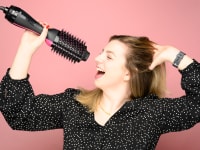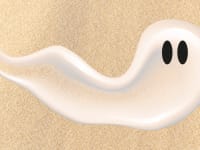I tried the hair brush celebrities love—is it really worth $200?
We pitted the famous Mason Pearson brush against (cheaper) knockoffs to find out.
 Credit:
Reviewed / Jackson Ruckar
Credit:
Reviewed / Jackson Ruckar
Products are chosen independently by our editors. Purchases made through our links may earn us a commission.
Listen, I’ve dropped thousands of dollars on my hair over the years. Am I proud of it? Not exactly, but I can guarantee that everyone has that one thing they choose to invest in that may sound ludicrous to someone else. The blond hair I was born with darkened to brunette by the time I hit preschool, but— looks off longingly into the distance —I always felt that I was meant to be blond...
Cutting to the chase, I understand why someone might spend whatever it takes to get their hair how they want it—whether that means going blond like me, or, say, buying the $200 Mason Pearson hairbrush that celebs and reviewers alike claim detangles, softens, and adds shine to their hair. Still, I wondered: Do you have to splurge for an authentic Mason Pearson hairbrush when there are so many alternatives out there, for way less cash? We tested a handful of best-selling imposters against the OG hair tool to find out.
What is the Mason Pearson brush?
Since the advent of the internet, this London-based hairbrush brand has made waves amongst celebrities like Heidi Klum, beauty bloggers on YouTube, and editorial sites in search of the best hairbrush. But the brush goes further back than that: In 1885, an engineer named Mason Pearson himself invented the now-wildly popular hair brushes in England, and the Pearson family continues to run the business to this day.

You can get the top-rated and Reviewed-approved Mason Pearson hair brush at Amazon and find out for yourself if the hype is real.
Read Our ReviewThe brush’s appearance is iconic, with a molded plastic handle and a rubber brush base from which small bundles of tufted bristles flare out.
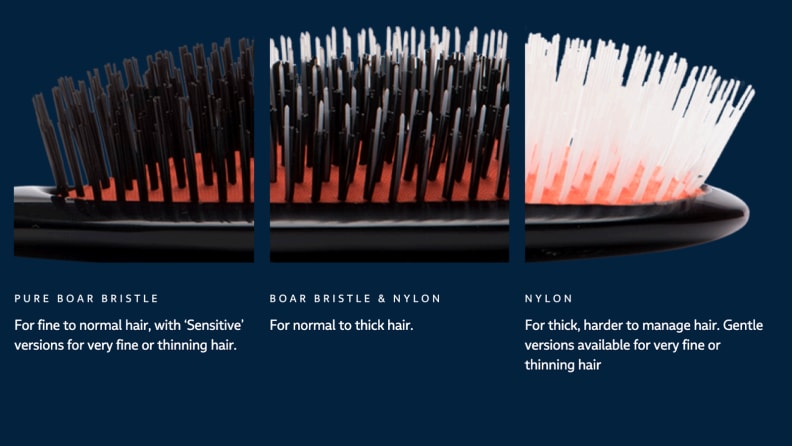
Mason Pearson makes a variety of brushes to suit every hair type.
There are several brushes in the Mason Pearson collection, each of which is available in different bristle types:
- Large: This brush is the largest with a 5.12-by-3-inch head, and comes in either all-nylon bristles or a mixture of nylon and boar bristles.
- Medium: This is, of course, a bit smaller with a 4.62-by-2.75-inch head, and comes in nylon bristles, extra-stiff boar bristles, or a combo of nylon and boar bristles.
- "Handy": This brush has a 4.37-by-2.5-inch head, and comes in nylon, stiff boar, fine boar, or a nylon-and-boar combo.
- Pocket: The smallest of the brushes, this has a 3.5-by-2-inch head, and comes in boar bristle, fine boar, nylon, fine boar-and-nylon combo, and a "child" version for ages three to six that has fine boar bristles all cut to the same length.
Mason Pearson also makes a "military" handleless brush that’s designed for short hair and comes in several iterations, but that’s outside the scope for this story.
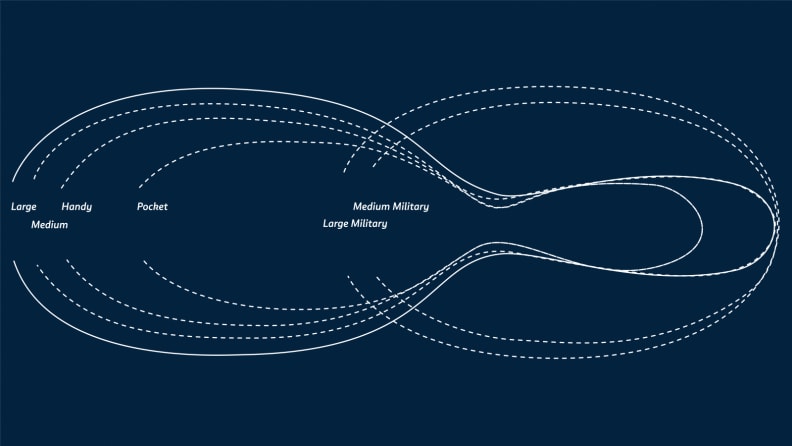
Mason Pearson offers several sizes.
You cannot buy directly from the Mason Pearson site, but instead can purchase the brushes at retailers like Amazon, Dermstore, Anthropologie, Nordstrom, Neiman Marcus, and more, for $86 to $325.
Why are the Mason Pearson brushes so expensive?

Mason Pearson brushes date back to 1885.
The question you’re likely wondering is why these brushes cost around $100 or more.
The answer: You’re (probably) mostly paying for the history of the brush and its famous name. Mason Pearson (the man—not the company) invented an automatic brush-boring machine to speed up the brush-making process, for which he received a Silver Medal at the International Inventions Exhibition in London. He also created the pneumatic rubber-cushion hairbrush, the design the brush still uses, which allows for a more gentle brushing, as pressure causes the cushion to deflate and the bristles to go with it.
Given that the brushes were an immediate success and received praise from the get-go, the prices make (more) sense. However, the original brush handles were hand-carved wood, which has since been replaced with plastic that’s hand-finished to "remove any sharp edges and make the hairbrush more comfortable to hold." You can still purchase a made-to-order, handmade lightwood brush—a price quote is "available upon request," but we have to assume it's (way) more than the $240 of the highest price factory-made option.
What do the Mason Pearson brushes claim to do?
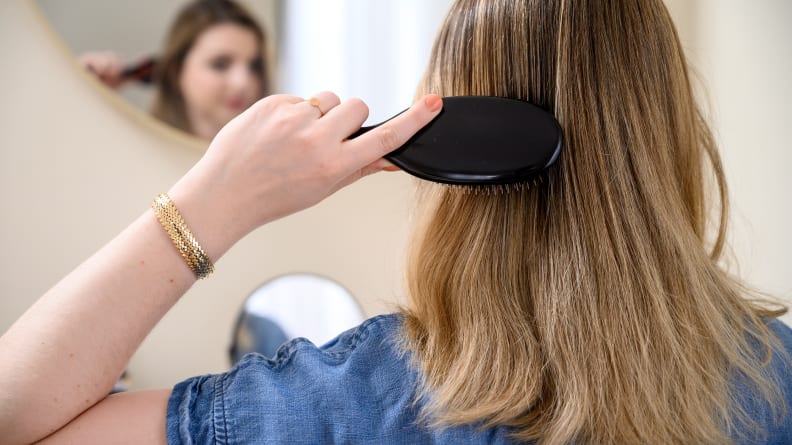
The Mason Pearson brush should distribute the hair's natural oils.
The brushes claim to distribute the hair’s natural oils from root to tip, detangle the hair with ease, and stimulate the scalp for a massage-like experience. Each brush type, and its use of boar and/or nylon bristles, serves a purpose for different hair types. For example, Mason Pearson recommends the "sensitive" brush, which uses only fine boar, for fine and thinning hair. Whereas someone with normal-to-thick hair should try a mixture of boar and nylon bristles, available in several of the brush types (large, medium, handy, and so on).
Does the Mason Pearson Brush do what it claims?
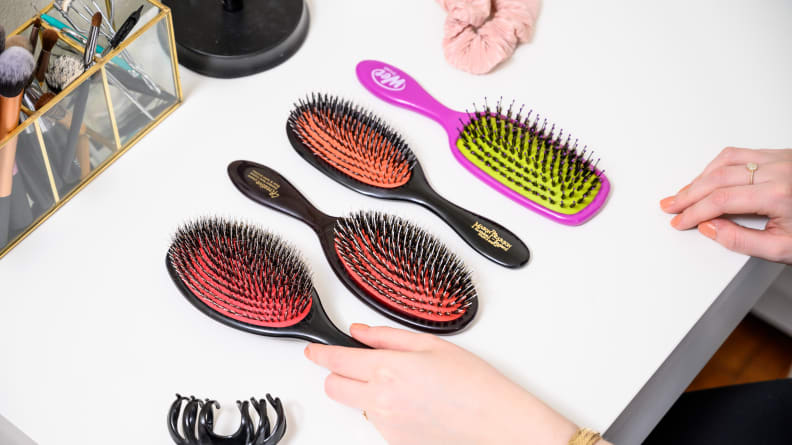
We tested brushes from Wet Brush, Creative Professional, and Denman alongside the famous Mason Pearson.
We tested the Handy Mixture Nylon and Boar Bristle Hair Brush, the company’s best-seller, against several lower-price brushes to see what all that cost was about (if anything). Our test field consisted of:
- The Original Wet Brush Boar Bristle Combination Brush ($9.99 at Target), which has a combination of boar bristles and flexible (Wet Brush calls these “Intelliflex") nylon bristles with nubs on the end.
- The Creative Professional Hair Classic Signature Mixed Bristle Brush ($27.45 on Amazon), which has nylon and boar bristles.
- The Denman D81L Large Hair Brush with Soft Nylon Quill Boar Bristles ($12.10 on Amazon), which also has nylon and boar bristles.
Some additional background: I typically use a Wet Brush that has nubbed nylon bristles on my long, medium-textured, wavy-curly hair after getting out of the shower and a paddle brush with similar bristles on my dry hair when I’m wearing it straight. I also own a boar-and-nylon bristle round brush for blow-drying my hair, but I recently replaced my blow-dry routine with the Revlon One-Step Hair Dryer and Volumizer, which is a brush and dryer in one.
Admittedly, I'ver never loved boar bristles in a brush, as it feels like they only skim the surface of my hair instead of penetrating it the way nylon bristles do. Still, all those rave reviews convinced me that I could be wrong about my brush preferences and should keep an open mind, so I did. I focused on the Mason Pearson’s claims that it detangles the hair and stimulates the scalp (determining how well a brush distributes the hair’s oils is tricky and may vary from person to person).
I tested the brush the way you probably would, running it through my tangled hair after the wind got a hold of it, brushing the stiffness out of my locks when I took my hair down from a ponytail or bun, and brushing when I felt like my hair just needed it.
My initial impression was that I didn’t like it. The boar bristles made a noise that too closely resembled the sound of ripping (I didn’t see any ripping, to be clear) and I noticed that the brush really flattened my roots. Instead of the bristles going through my hair to get to my scalp, it was almost like they were pressing my hair flat to reach my scalp. This came in handy when I wanted to create a sleek bun, but I mostly wear my hair down and don’t need this quality in a brush other than the rare occasions I put it up (usually on a bad hair day or when I’m running errands). However, overall this brush detangled and smoothed my hair with several passes through it and the nylon bristles felt pleasantly prickly on my scalp during the process.
I had similar experiences and impressions of the Denman and Creative Professional brushes, with the Denman offering same amount of stiffness and scratchiness as the Mason Pearson and the Creative Professional feeling a bit softer on the scalp. The Wet Brush did not feel scratchy on the scalp at all because its nylon bristles have nubbed ends—and because of that, I liked this one the best. I don’t hate that scratchy-bristle sensation, but I prefer a smoother massage—not surprising, as this is what I’m used to.
Is the Mason Pearson worth it?
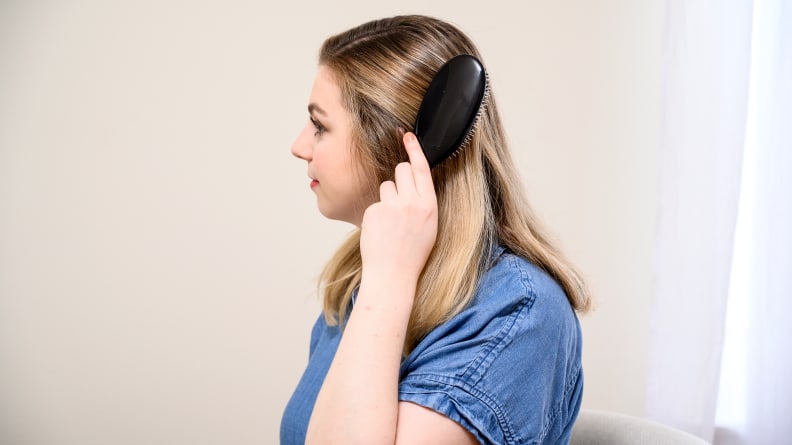
Mason Pearson makes a quality brush, but the price is hard to swallow.
Given that I did not have very strong feelings about the brush, I enlisted the help of my coworkers for further analysis.
I set all four of the brushes out and blinded the brand labels and asked 10 of my coworkers to guess, based on look and feel, which brush costs $200. Their answers were telling: Only two guessed correctly, with the other eight votes going to the Denman (three) and the Creative Professional (five) models. (The Wet Brush was an obvious outlier due to its color—some staffers even exclaimed that the "purple one" was the brush they had at home.)
When I asked why they thought the Denman or Creative Professional brush was the expensive one, I received comments about the Creative Professional’s bristles looking softer and plentiful, and the Denman feeling lighter and better to run through tangles.
As for which brush they liked the best in terms of feel, the Mason Pearson got a third of the votes. But every brush got at least one "favorite" vote, with comments on the Wet Brush like "those little nubbins make it the least scratchy to use" and that the Creative Professional was "not as hard on the scalp" as the other brushes.
What I gleaned from this experiment, in conjunction with my own testing? The Mason Pearson is a fine hairbrush. But it’s no longer 1885 and there are now plenty of quality brushes out there that can give you shiny, soft hair—without the sky-high price tag.

You can get the top-rated and Reviewed-approved Mason Pearson hair brush at Amazon and find out for yourself if the hype is real.
Read Our ReviewMore on hair brushes and hair care
- The Best Hair Brushes We've Tested
- The Best Hair Dryer Brushes We've Tested
- The 10 most popular hair brushes—and which one is right for you
- Revlon One-Step Volumizer Plus review
- How to clean your hairbrush
- Will this Amika hair brush replace straighteners forever?
- This brush made detangling my curly hair a breeze
- Do you really need a 'smart' hair brush?
- The Best Hairstyling Tools We've Tested
- 10 amazing hair products for people in their 60s

